
JOURNAL OF WORLD PREHISTORY
Scope & Guideline
Pioneering Discoveries in Global Prehistory
Introduction
Aims and Scopes
- Archaeological Research and Methodologies:
The journal emphasizes innovative archaeological techniques and methodologies, including isotopic analysis, offsite survey archaeology, and excavation reports, to reconstruct past human behaviors and environmental interactions. - Cultural and Social Complexity:
A core focus is on understanding the development of social structures and cultural practices in prehistoric societies, examining aspects such as regional societies, social hierarchies, and rituals. - Technological Advances and Material Culture:
The journal highlights studies on technological advancements, particularly in metallurgy and material culture, analyzing how such developments influenced social dynamics and economic practices. - Interregional Interactions and Networks:
Research on the circulation of goods, information, and cultural practices across regions is a significant area of interest, reflecting on how prehistoric societies were interconnected. - Environmental and Ecological Contexts:
The journal frequently publishes studies that consider the ecological and environmental factors influencing prehistoric human activities, including agricultural practices, resource management, and settlement patterns.
Trending and Emerging
- Interdisciplinary Approaches:
There is a growing trend towards interdisciplinary research that combines archaeology with other fields such as anthropology, environmental science, and history, enriching the analysis of prehistoric societies. - Impact of Climate and Environment:
Recent studies increasingly address the impact of climate change and environmental factors on human societies, particularly in understanding demographic shifts and settlement patterns throughout prehistory. - Social Complexity and Hierarchies:
Research focusing on the emergence of social complexity and stratification within prehistoric communities is on the rise, exploring how these dynamics influenced cultural developments and interactions. - Technological Innovation and Economic Practices:
Emerging themes include the exploration of technological innovations, particularly in metallurgy and agricultural practices, and their implications for social and economic organization. - Globalization and Cultural Exchange:
There is an increasing emphasis on globalization processes in prehistory, with studies examining how ancient societies engaged in exchange networks and cultural interactions across vast distances.
Declining or Waning
- Traditional Hunter-Gatherer Studies:
Research focused solely on traditional hunter-gatherer societies seems to be declining, with fewer papers addressing these groups in isolation, reflecting a broader integration of these societies into complex social narratives. - Regional Studies with Limited Scope:
There appears to be a reduction in studies that focus narrowly on specific regional contexts without broader implications or connections, as the journal increasingly emphasizes global interactions and comparative analyses. - Descriptive Archaeological Reports:
Papers that solely present descriptive accounts of archaeological findings without theoretical or methodological advancements are becoming less common, indicating a shift towards more analytical and interpretive frameworks.
Similar Journals

Complutum
Exploring the Depths of History and ArcheologyComplutum, published by the Universidad Complutense de Madrid, serves as a leading academic journal in the fields of Archeology and History. With a notable track record since its inception and a convergence stretching from 2011 to 2024, the journal has established itself as a pivotal platform for scholarly discourse in these disciplines. Recognized in 2023 with a Q2 ranking in Archeology and Arts and Humanities, as well as a Q1 ranking in History, Complutum demonstrates its commitment to quality research, attracting contributions from leading experts and emerging scholars alike. The journal's impact is further evidenced by its competitive ranks within various Scopus categories, particularly its placement in the 77th percentile for History and 64th for Archeology. As a printed publication without open access options, Complutum caters to a specialized audience, providing a forum for in-depth analysis and discussion on archaeological findings and historical interpretations. Researchers, professionals, and students engaged in these fields will find Complutum an invaluable resource for advancing knowledge and fostering academic collaboration.
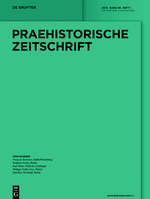
Praehistorische Zeitschrift
Advancing Knowledge in Prehistoric Studies Since 1909Praehistorische Zeitschrift is a premier scholarly journal dedicated to the field of archaeology, published by WALTER DE GRUYTER GMBH in Germany. With a rich history dating back to 1909, the journal has evolved to encompass a wide range of topics pertaining to prehistory, offering vital insights into archaeological practices, theories, and discoveries. Recognized as a Q1 journal in both the Archaeology category of Arts and Humanities and the Social Sciences, it holds a prestigious position with Scopus rankings placing it in the top 20% of its field. Although it operates under a traditional publishing model without open access, its comprehensive articles are essential reading for researchers, professionals, and students alike who seek to deepen their understanding of prehistoric studies through rigorous academic contributions. The journal continues to publish significant research from 1993 to 2024 and beyond, making it an indispensable resource for anyone interested in the archaeological narrative of humanity.
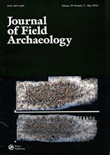
JOURNAL OF FIELD ARCHAEOLOGY
Transforming Archaeological Inquiry into Impactful KnowledgeJOURNAL OF FIELD ARCHAEOLOGY, published by Routledge Journals, Taylor & Francis Ltd, is a premier scholarly publication dedicated to advancing the field of archaeology. With an impressive impact factor reflecting its significant contributions to both the arts and humanities, this journal ranks in the Q1 category for archaeology, with a remarkable position of #21/413 in the arts and humanities realm and #19/354 in social sciences, placing it in the 95th percentile among its peers. Catering to researchers, professionals, and students alike, the journal has continuously explored critical archaeological questions since its inception in 1974, with a commitment to disseminating high-quality research and innovative methodologies up to the present. Although it operates under a traditional access model, the journal engages a broad readership with its insightful studies and findings, making it an essential resource for anyone deeply involved in archaeology and its related disciplines.

Lanx-Journal of the Scuola di Specializzazione in Archeologia of the University of Milan
Connecting scholars to preserve our shared history.Lanx-Journal of the Scuola di Specializzazione in Archeologia of the University of Milan, published by Milano University Press, is a distinguished platform dedicated to the field of archaeology. Committed to advancing archaeological research and scholarship, this Open Access journal has been available to the global academic community since 2008, facilitating easy dissemination of innovative ideas and findings. With a strong emphasis on promoting interdisciplinary dialogue, the journal covers a wide range of topics from classical archaeology to contemporary practices, making it an invaluable resource for researchers, professionals, and students in the field. Situated in the historic city of Milan, it aims to contribute to the preservation and understanding of cultural heritage through rigorous academic inquiry and collaboration.

Bulletin de la Societe Prehistorique Francaise
Connecting Past and Present: Insights from Prehistoric StudiesBulletin de la Societe Prehistorique Francaise (ISSN: 0249-7638; E-ISSN: 1760-7361), published by the SOCIETE PREHISTORIQUE FRANCAISE, stands as a pivotal journal within the domain of archaeology, particularly emphasizing prehistoric studies. With its classification in the Q2 quartile of both the arts and humanities as well as social sciences in archaeology, the journal positions itself among the top 25% of publications in these categories as of 2023. This distinguished ranking reflects its significant contribution to the field, providing researchers, professionals, and students with critical insights and innovative methodologies related to prehistoric research. Although open access options are currently unavailable, the journal is committed to fostering academic discourse and sharing knowledge that influences contemporary archaeological practices. As a member of the elite academic community, Bulletin de la Societe Prehistorique Francaise is highly regarded for its rigorous peer-review process and dedication to the advancement of archaeology, making it an essential resource for anyone invested in understanding our historical roots.
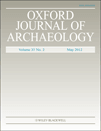
Oxford Journal of Archaeology
Uncovering the Past, Shaping the FutureOxford Journal of Archaeology is a prestigious peer-reviewed journal published by WILEY, dedicated to advancing the field of archaeology through innovative research and insightful discourse. Established in 1982, this journal has become a vital resource, showcasing high-impact studies that resonate within the arts and humanities, as well as interdisciplinary fields such as geography and planning. With an impressive Q1 ranking in both Archaeology and Arts & Humanities categories, and a Q2 ranking in Geography, Planning, and Development, the journal consistently maintains its reputation for excellence—evidenced by its ranking in the 81st percentile within the Scopus Arts and Humanities Archaeology category. The Oxford Journal of Archaeology not only provides scholars, professionals, and students with access to cutting-edge archaeological research but also encourages collaboration and dialogue among a diverse academic community. Although the journal does not currently offer Open Access, it remains a crucial platform for those seeking to expand their knowledge and impact in this dynamic field.
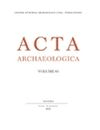
ACTA ARCHAEOLOGICA
Bridging Cultures Through Archaeological ResearchACTA ARCHAEOLOGICA is a highly regarded, peer-reviewed journal published by BRILL, focusing on the dynamic field of archaeology. With an ISSN of 0065-101X and an E-ISSN of 1600-0390, this journal disseminates innovative research, critical analyses, and comprehensive reviews that contribute to our understanding of human history, cultural heritage, and archaeological methodology. ACTA ARCHAEOLOGICA has excelled in its field, achieving a Q1 ranking in both the Arts and Humanities and Social Sciences categories for 2023, showcasing its impact and relevance in scholarly discourse. Though not currently open access, the journal caters to a diverse audience of researchers, professionals, and students, offering invaluable insights into archaeological studies from a global perspective. As it continues to foster academic dialogue, ACTA ARCHAEOLOGICA remains a cornerstone for those looking to deepen their knowledge and engage with cutting-edge archaeological research.
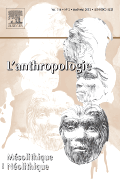
ANTHROPOLOGIE
Uncovering Insights into Human Behavior and ThoughtANTHROPOLOGIE, published by Elsevier France - Éditions Scientifiques Médicales Elsevier, is a leading academic journal dedicated to advancing the fields of Anthropology and the History and Philosophy of Science. With a publication history that dates back to 1947, this esteemed journal has steadily carved its niche within the scholarly community, achieving a commendable Q2 rank in both the aforementioned categories in 2023. Although it does not offer Open Access, ANTHROPOLOGIE provides robust access options through institutional subscriptions, ensuring that researchers and practitioners alike can delve into its rich repository of knowledge. The journal's impact is underscored by its competitive Scopus rankings, particularly its position within the 65th percentile for History and Philosophy of Science and 56th percentile within Anthropology. Through rigorous peer-reviewed articles that illuminate a wide array of anthropological inquiries and philosophical debates, ANTHROPOLOGIE continues to be an essential resource for those committed to exploring the complexities of human behavior, culture, and scientific understanding in an ever-evolving world.

ANTIQUITY
Connecting Scholars to the Legacy of HumanityANTIQUITY is a prestigious academic journal published by Cambridge University Press that has been at the forefront of archaeological and humanities scholarship since its inception in 1927. With its roots firmly planted in the United Kingdom, the journal has achieved remarkable recognition, maintaining a Q1 ranking in both the fields of Archaeology and Arts and Humanities as of 2023. With an impressive Scopus ranking of #3 out of 173 in General Arts and Humanities and #28 out of 354 in Archaeology, it underscores its significant impact and influence in shaping contemporary discourse in these domains. Although it is not an Open Access journal, ANTIQUITY provides crucial insights into the evolution of human societies through a comprehensive range of archaeological studies, reviews, and theoretical discussions. By facilitating knowledge exchange among researchers, professionals, and students, ANTIQUITY not only enriches academic literature but also fosters a deeper understanding of our past.

Bulgarsko e-Spisanie za Arkheologiya-Bulgarian e-Journal of Archaeology
Showcasing the forefront of archaeological scholarship in Bulgaria.Bulgarsko e-Spisanie za Arkheologiya - Bulgarian e-Journal of Archaeology is a prominent open-access journal published by the ASSOC BULGARIAN ARCHAEOLOGISTS since 2011, serving as a vital platform for the dissemination of archaeological research and findings in Bulgaria and beyond. With the ISSN 1314-5088, this journal is dedicated to advancing knowledge in the field of archaeology, facilitating the sharing of innovative studies, fieldwork results, and theoretical discussions. It is particularly significant for researchers, professionals, and students who are interested in the archaeological heritage of Bulgaria, providing an accessible venue for high-quality scholarly contributions. The journal's commitment to open access ensures that its rich repository of knowledge is available to a global audience, enhancing collaboration and fostering new discoveries within the discipline.